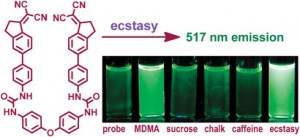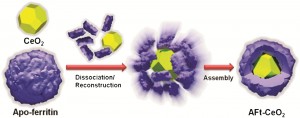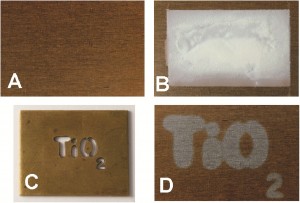This month sees the following articles in ChemComm that are in the top ten most accessed:-
Transition-metal-free highly chemo- and regioselective arylation of unactivated arenes with aryl halides over recyclable heterogeneous catalysts
Hongli Liu, Biaolin Yin, Zhiqiang Gao, Yingwei Li and Huanfeng Jiang
Chem. Commun., 2012, 48, 2033-2035, DOI: 10.1039/C2CC16790E
Suzuki reactions of extended scope: the ‘9-MeO-9-BBN variant’ as a complementary format for cross-coupling
Günter Seidel and Alois Fürstner
Chem. Commun., 2012, 48, 2055-2070, DOI: 10.1039/C2CC17070A
Visible light-induced oxidative coupling reaction: easy access to Mannich-type products
Guolei Zhao, Chao Yang, Lin Guo, Hongnan Sun, Chao Chen and Wujiong Xia
Chem. Commun., 2012, 48, 2337-2339, DOI: 10.1039/C2CC17130A
NHC-catalyzed thioesterification of aldehydes by external redox activation
Takuya Uno, Tsubasa Inokuma and Yoshiji Takemoto
Chem. Commun., 2012, 48, 1901-1903, DOI: 10.1039/C2CC17183J
Cu-catalyzed asymmetric [3+2] cycloaddition of a-iminoamides with activated olefins
María González-Esguevillas, Javier Adrio and Juan C. Carretero
Chem. Commun., 2012, 48, 2149-2151, DOI: 10.1039/C2CC17149J
Efficient iron(iii)-catalyzed three-component coupling reaction of alkynes, CH2Cl2 and amines to propargylamines
Jian Gao, Qing-Wen Song, Liang-Nian He, Zhen-Zhen Yang and Xiao-Yong Dou
Chem. Commun., 2012, 48, 2024-2026, DOI: 10.1039/C2CC17616E
A heptamethine cyanine-based colorimetric and ratiometric fluorescent chemosensor for the selective detection of Ag+ in an aqueous medium
Hong Zheng, Min Yan, Xiao-Xing Fan, Dan Sun, Shi-Yao Yang, Li-Jiao Yang, Jun-Dong Li and Yun-Bao Jiang
Chem. Commun., 2012, 48, 2243-2245, DOI: 10.1039/C2CC17388C
Facile synthesis of silicon nanoparticles inserted into graphene sheets as improved anode materials for lithium-ion batteries
Xiaosi Zhou, Ya-Xia Yin, Li-Jun Wan and Yu-Guo Guo
Chem. Commun., 2012, 48, 2198-2200, DOI: 10.1039/C2CC17061B
A new strategy for chiral recognition of amino acids
Yingzi Fu, Qian Han, Qiao Chen, Yonghua Wang, Juan Zhou and Qing Zhang
Chem. Commun., 2012, 48, 2322-2324, DOI: 10.1039/C2CC17301H
Controllable selective exfoliation of high-quality graphene nanosheets and nanodots by ionic liquid assisted grinding
Nai Gui Shang, Pagona Papakonstantinou, Surbhi Sharma, Gennady Lubarsky, Meixian Li, David W. McNeill, Aidan J. Quinn, Wuzong Zhou and Ross Blackley
Chem. Commun., 2012, 48, 1877-1879, DOI: 10.1039/C2CC17185F
Why not take a look at the articles today and blog your thoughts and comments below.
Fancy submitting an article to ChemComm? Then why not submit to us today or alternatively contact us with your suggestions.
















